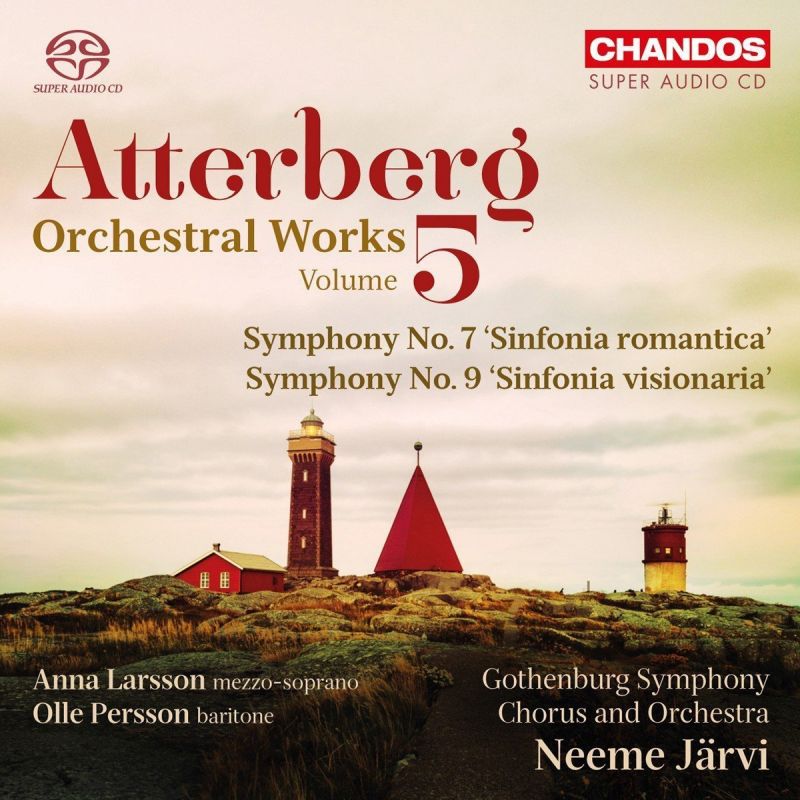ATTERBERG Symphonies Nos 7 & 9
View record and artist detailsRecord and Artist Details
Composer or Director: Kurt (Magnus) Atterberg
Genre:
Orchestral
Label: Chandos
Magazine Review Date: 08/2016
Media Format: Super Audio CD
Media Runtime: 63
Mastering:
DDD
Catalogue Number: CHSA5166

Tracks:
| Composition | Artist Credit |
|---|---|
| Symphony No. 7, 'Sinfonia romantica' |
Kurt (Magnus) Atterberg, Composer
Gothenburg Symphony Orchestra Kurt (Magnus) Atterberg, Composer Neeme Järvi, Conductor |
| Symphony No. 9, 'Sinfonia visionaria' |
Kurt (Magnus) Atterberg, Composer
Anna Larsson, Soprano Gothenburg Symphony Chorus Gothenburg Symphony Orchestra Kurt (Magnus) Atterberg, Composer Neeme Järvi, Conductor Olle Persson, Baritone |
Author: Guy Rickards
Atterberg remained a lifelong Romantic. In the mid-1950s he became marginalised as the music of the younger generation and Second Viennese School made ground. For his Ninth and final symphony, Atterberg turned to the apocalyptic Icelandic tale, the Völuspá, and a much earlier, set-aside project for a cantata. His only choral symphony, the Sinfonia visionaria (1955 56) is the summa summarum of his career: a beautifully crafted cantata-symphony, the product of a lifetime’s experience. Never mind that it is deeply conservative, that he – as Hindemith was doing at the same time – wrily pilloried dodecaphony in its representation of evil: it is an utterance of subtlety and profundity.
Järvi and his Gothenburg forces produce exemplary performances, stronger in interpretative outline than their rivals and much more vividly recorded. Listen no further than the opening chord of No 9 to hear the depth of Chandos’s sound and Torbjörn Samuelsson’s superb engineering. Recommended.
Explore the world’s largest classical music catalogue on Apple Music Classical.
Included with an Apple Music subscription. Download now.

Gramophone Digital Club
- Digital Edition
- Digital Archive
- Reviews Database
- Events & Offers
From £9.20 / month
Subscribe
Gramophone Club
- Print Edition
- Digital Edition
- Digital Archive
- Reviews Database
- Events & Offers
From £11.45 / month
Subscribe
If you are a library, university or other organisation that would be interested in an institutional subscription to Gramophone please click here for further information.






